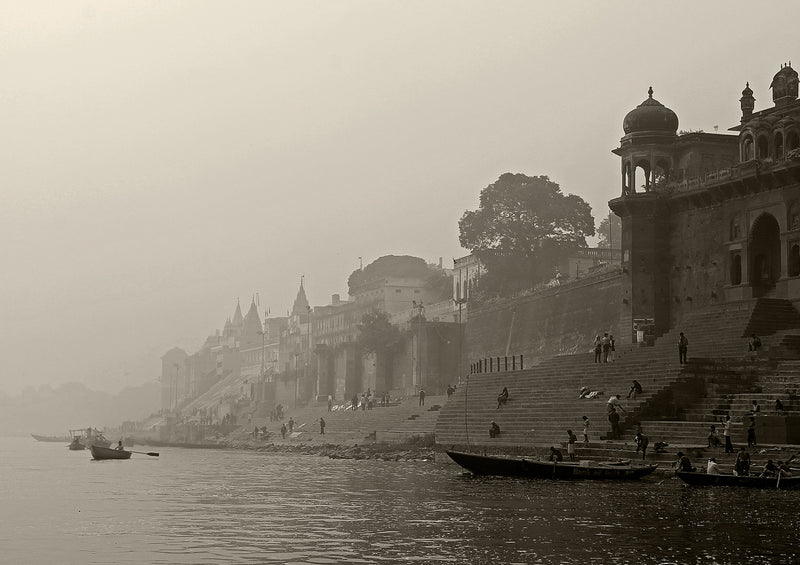THE RIVER & HER WEAVERS


Various forms; all One.

A fragment of an antique banarasi textile gifted by a dear friend led me to Varanasi eleven years back in search of its source. The land is so chaotic yet spiritual that words can barely describe the peculiar feeling. I still haven't fully grasped its vastness and its unique character. But what I know for sure is that the spiritual nature of river Ganga deepens our connection with nature, forcing one to slow down and focus on the now.

I was fascinated by the contradictions and complexities of the place. The city was crowded and chaotic, but the river was extremely calm, and the people were spiritual, happy and fearless. River Ganga – with its power that flows right into your mind – eases your heart to the core. It makes you feel grateful for this life.

Walking around the narrow bylanes of Varanasi, I could only hear the slow rhythm of the handloom, a glorious tradition of the bunkars that won't survive more than half a century. Bunkars is a community of handloom weavers of Varanasi. Here, the entire family is involved in the weaving process. The older women sort out the thread, others help mount the thread on the loom, after which the weaver starts his work. The weaver of a Banarasi sari is an extremely skilled artisan. The skill to bring intricate patterns to life on the fabric requires years of experience and commitment. That is the genius of the weaver of Varanasi. He commits himself to each piece, physically, emotionally, and financially. The meticulously woven final product made from natural silk, especially with gold-plated and silver-plated threads, is of exceptional value. Depending on the intricacy, a Banarasi sari takes around one to six months of labor on a hand-loom to create, thus increasing the cost. Today, the power loom has distorted the market. However, the quality of the handloom fabric is unmatched, and one can only experience its finesse by using it. It's an emotion.

It's incredible to watch the weavers work in their houses. The designs are primarily based on history and culture. There is a synchronized beauty in weaving as the shuttle moves back and forth rhythmically and the warp and weft come together in a production. The shuttle is a boat-shaped wooden instrument used to carry the weft yarn for weaving the fabric, and it fits nicely into the natural curves of the weaver's hand, making it easier to handle. The pattern is woven face downward for easier weft insertion, and a mirror is used to control the fabric pattern. During the weaving process, the weaver occasionally sprinkles water on the warp with a broom-like instrument to maintain its elasticity, failing, which would lead to yarn breakage due to dryness. Attention to detail in every step is crucial to weave an authentic hand-woven Banarasi Sari.

The building process of a loom itself is an engineering feat. Pit loom is set by sinking four posters into the ground with an overhang slay for the weaver to operate. The earth absorbs the tension and speed and makes the fabric more breathable. Pit loom weaving is considered better weaving as the fabric woven retains the character of the fiber and material due to the proximity to the ground.



Images ©shimai jayachandra
To make my garment when you come to me.
My loom has ten thousand threads
To make my garment when you come to me.
The sun and moon watch while I weave your name;
The sun and moon hear while I count your name.
These are the wages I get by day and night
To deposit in the lotus bank of my heart.
I weave your name on the loom of my mind
To clean and soften ten thousand threads
And to comb the twists and knots of my thoughts.
No more shall I weave a garment of pain.
For you have come to me, drawn by my weaving,
Ceaselessly weaving your name on the loom of my mind."
-Kabir Das.

